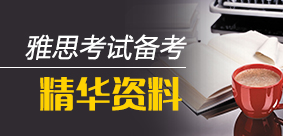发贴:jassylaw
使用说明: 1 根据机经范围找到的背景段,同学们可以利用这些段子来整理自己的背景词汇。
2 世面上能找到的已在预测中精选出,此处不再累叙。
3 背景段尽量一日一新,直到所有听力机经背景段找完为止。
4 使用背景段:快速朗读两遍再弄清意思,搞录背景词汇。每天花十分钟弄一篇,还可练口语语感。G类同学可以某些相同背景作为阅读背景学习。
5 要是觉得好,一定要顶啊,不顶就懒得做下去了。。。
背景段2 有关悉尼大学的图书馆借书规则 1 (可用于G类阅读)
Library Resources generally
Conditions of use
(1) Libraries and Library Resources are provided:
(a) primarily for staff and students of the University, who have priority of access and use at all times;
(b) to facilitate and assist the educational and research activities of the University and its staff and students.
However, the Librarian may determine from time to time who else may use Library Resources and under what conditions.
(2) All Users:
(a) Should be able to work in a Library without unnecessary or unreasonable disturbance or distraction;
(b) Must not do any thing that unreasonably:
(i) Impedes other Users or Library Staff through noisy, annoying, dangerous or otherwise disruptive behaviour;
(ii) Restricts or limits other Users or Library Staff from having access to or using Library Resources;
(iii) Diverts Library Staff from carrying out their normal duties.
(c) Must, if and when directed by Library Staff to do so:
(i) produce their Library Card or other form of identification;
(ii) make any bag, receptacle or folder brought into a Library available for inspection.
(d) Must not bring any animal into a Library - except a guide dog, hearing assistance dog or other animal trained to alleviate the effect of a disability as defined in section 9 of the Disability Discrimination Act 1992 (Cth);
(e) Must not damage or destroy any Library property;
(f) Comply with all notices or signs in a Library or on the Library's website from time to time, including those about:
(i) Use, borrowing or reservation of Library Resources;
(ii) Payment of fees, charges and fines;
(iii) Opening and closing times;
(iv) Copyright (especially in relation to photocopying) and other laws, such as data protection and privacy
(v) Use of mobile phones and other electronic devices;
(vi) Eating or drinking in or around a Library;
(vii) Occupational health and safety (including smoking and emergency evacuation procedures).
(g) Are expected to make reasonable attempts to familiarise themselves with and must, in any case, comply with:
(i) Laws relating to use of internet and other on-line or networked resources, including copyright and other intellectual property rights, defamation, pornography and data protection;
(ii) This Rule and any other conditions imposed by the University about access to or use of Library Resources;
(h) Must not use any Library Resources for:
(i) any commercial use; or
(ii) in a way which interferes or is inconsistent with the educational and research activities of the University.
背景段1 有关剑桥大学学校介绍
a : Introduction
The University of Cambridge is a loose confederation of faculties, Colleges, and other bodies. The University works with a relatively small central administration, and with central governing and supervisory bodies consisting of, and mainly elected by, the current academic personnel of the Faculties and Colleges. An unusually large part of Cambridge's day-to-day administration is carried out by teaching staff on behalf of their colleagues, and the University's legislative structure is in practice unusually open to consultation and participation. The procedural rules are embodied in the University's Ordinances, which prescribe in some detail the formal administrative practices. These rules are made in most cases by the University itself, within a framework set by the Statutes, which can only be changed with the approval of The Queen in Council. The University's volume of Statutes and Ordinances, published triennially with annual supplements, is readily available throughout the University, and contains the basis of its constitution, procedures and practice. Full details of the membership of all the academic and administrative bodies described in this booklet are given in a special October issue of the University's weekly official journal Cambridge University Reporter, with subsequent changes noted in ordinary issues.
To understand how the 'Cambridge' structure operates, it helps to keep the historical origins in mind. The University was established in about 1209 to examine and to confer Degrees. The first Colleges, each autonomous and independent with its own Governing Body and Charter, were established later, from 1284, principally to teach and house students at all levels. Today, the Colleges are mainly concerned with the teaching of their undergraduates and the academic support of both graduate and undergraduate students, and of scholars and research workers of outstanding merit. In this century the role of the University has hugely expanded through the provision of facilities, such as teaching and research laboratories, which it is practically possible only to provide centrally. The University employs Professors, Readers, Lecturers and other teaching and administrative staff who provide the formal teaching (lectures, seminars and practical classes). The Colleges supplement their teaching with supervisions, given by Fellows or others appointed by the College, and each College also provides library and other learning resources exclusively for its own members.
The University retains sole responsibility for examinations and for conferring Degrees. The Colleges, on the other hand, have responsibility for selecting, admitting and accommodating all undergraduate students, and a student cannot enter the University unless he or she also becomes a member of a College. However, the University lays down the admission qualifications for undergraduate students, and also has certain controls over the statutes of the individual colleges.
This Guide deals only with the principal officials, institutions and procedures of the University as distinct from the Colleges.
The University of Cambridge is one of the oldest universities in the world, and one of the largest in the United Kingdom. It has a world-wide reputation for outstanding academic achievement and the high quality of research undertaken in a wide range of science and arts subjects. The University pioneers work in the understanding of disease, the creation of new materials, advances in telecommunications and research into the origins of the universe. It trains doctors, vets, architects, engineers and teachers. At all levels about half of the students at Cambridge study arts and humanities subjects, many of whom have gone on to become prominent figures in the arts, print and broadcast media. The University's achievements in the sciences can be measured by the sixty or more Nobel Prizes awarded to its members over the years.
Constitution of the University
The University is a self-governing body: the legislative authority is the Regent House, which consists of the three thousand or so members of the teaching and administrative staff of the University and Colleges who have the MA (or MA status) or a higher degree. The principal administrative body of the University is the Council, which consists mainly of members of the academic staff elected by the Regent House. The General Board of the Fa
文章来源于网络,如有侵权请联系我们,将会在第一时间处理
更多资讯可以关注微信公众号:IELTSIM。
[AD] 点击此处了解【雅思合集】【学习计划定制】【终生VIP服务】








